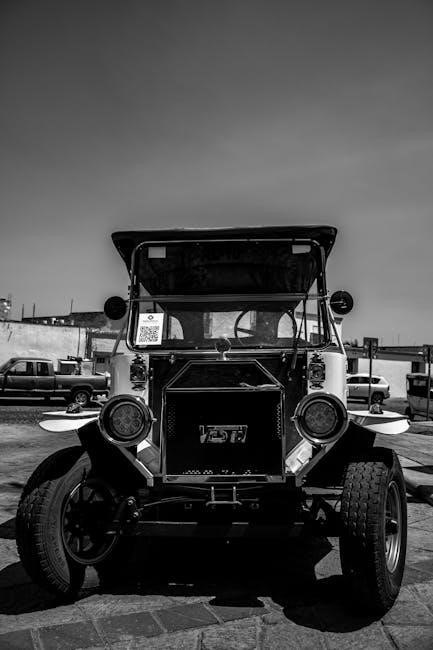Classic car owner manuals are essential guides providing detailed information about vehicle operation, maintenance, and troubleshooting. They serve as invaluable resources for preserving and understanding classic automobiles, ensuring optimal performance and longevity.
These manuals are not just practical tools but also cherished collectibles, offering insights into the history and engineering of iconic cars. They empower owners to maintain their vehicles effectively, fostering a deeper connection with their classic rides.
1.1 Understanding the Importance of Owner Manuals
Owner manuals are indispensable for classic car enthusiasts, offering detailed insights into vehicle operation, maintenance, and troubleshooting. They provide essential information tailored to specific models, ensuring owners can optimize performance and longevity.
These manuals are not just practical guides but also historical documents, preserving the engineering expertise behind iconic cars. They empower owners to perform routine maintenance, understand technical specifications, and address common issues effectively.
Additionally, owner manuals enhance the driving experience by explaining advanced features and safety protocols. Their availability in both physical and digital formats ensures accessibility for modern and vintage car enthusiasts alike.
1.2 Historical Significance of Classic Car Manuals
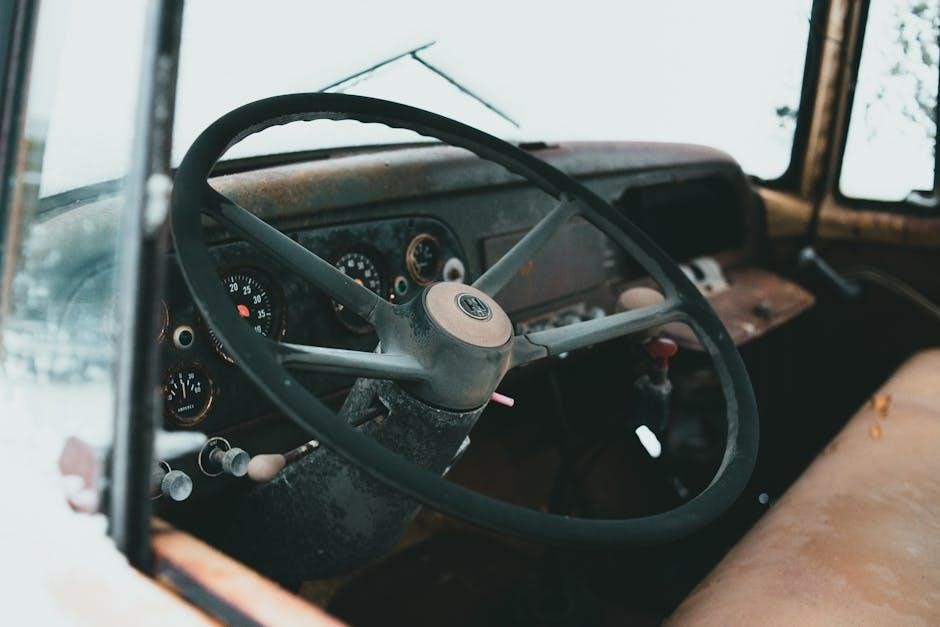
Classic car manuals hold a unique historical significance, serving as windows into the evolution of automotive engineering and design. They document the technical advancements and cultural influences of their eras, offering insights into how cars were constructed and maintained.
These manuals often feature original illustrations and detailed instructions, reflecting the craftsmanship and innovation of their time. They are treasured by collectors and historians, providing a tangible connection to the past.
Moreover, they highlight the transition from analog to digital, with modern versions adapting to technological changes while preserving the essence of their historical counterparts. This blend of nostalgia and progress underscores their enduring value.
1.3 Evolution of Owner Manuals Over the Years
The evolution of classic car owner manuals reflects advancements in automotive technology and changing consumer needs. Early manuals were basic pamphlets with essential operating instructions, while later editions became comprehensive guides, including detailed maintenance schedules and repair procedures.
The shift from print to digital formats has made manuals more accessible, with searchable content and multimedia features. Modern manuals now include troubleshooting guides, diagnostic codes, and environmental compliance information.
Despite these changes, the core purpose remains the same: to empower owners with knowledge. This transformation highlights the balance between tradition and innovation, ensuring manuals remain relevant in the digital age.
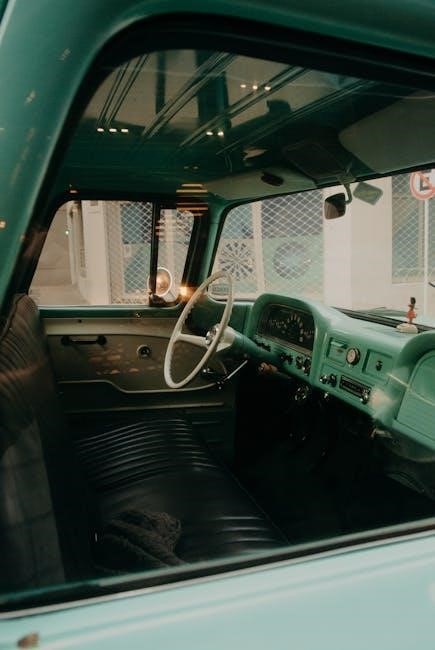
What Information is Typically Included in Classic Car Owner Manuals
Classic car owner manuals typically include vehicle specifications, maintenance schedules, troubleshooting guides, and detailed operating instructions to help owners understand and care for their vehicles effectively.
2.1 Vehicle Specifications and Technical Details
Classic car owner manuals provide detailed vehicle specifications, including engine type, displacement, horsepower, and torque. They list transmission types, gear ratios, and drivetrain configurations. Dimensions such as wheelbase, length, width, and height are included, along with curb weight and payload capacity. Technical details like fuel capacity, tire sizes, and suspension systems are also covered. These specifications help owners understand their car’s capabilities and requirements, ensuring proper maintenance and performance. Additionally, they often include diagrams and charts to illustrate complex components, making it easier for owners to identify parts and understand how systems function. This information is invaluable for both daily operation and long-term preservation of the vehicle.
2.2 Maintenance and Repair Guidelines
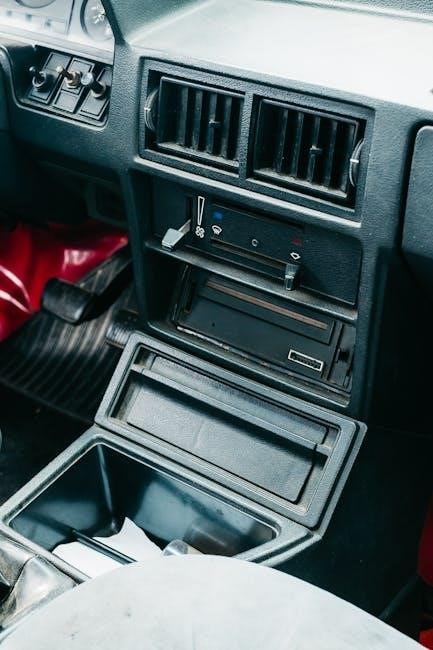
Classic car owner manuals offer comprehensive maintenance and repair guidelines to ensure the vehicle’s longevity. They outline scheduled maintenance routines, such as oil changes, fluid replacements, and tire rotations, with specific intervals. Repair sections provide step-by-step instructions for common issues, including brake systems, cooling systems, and electrical components. Manuals often include diagrams to help owners locate parts and understand repair processes. Guidance on troubleshooting and preventive measures is also provided to address potential problems before they escalate. These guidelines empower owners to perform routine upkeep and minor repairs, preserving the car’s condition and performance while maintaining its original integrity.
2.3 Operating Instructions for Classic Cars
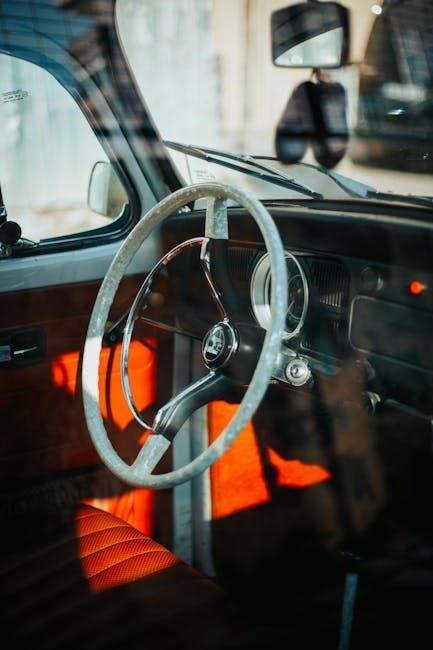
Classic car owner manuals provide detailed operating instructions to ensure optimal performance and safety. They typically include pre-startup checks, such as checking fluid levels and electrical systems. Instructions for starting and warming up the engine, especially in cold conditions, are often highlighted. Manuals also cover proper gear shifting techniques, braking practices, and acceleration guidelines to preserve the transmission and engine. Additionally, they may include tips for handling unique features, such as carburetors or vintage suspension systems. Owners are advised on speed limits, avoiding aggressive driving, and maintaining smooth operation to prolong the vehicle’s lifespan. These instructions are tailored to the specific needs of classic cars, ensuring a safe and enjoyable driving experience.
2.4 Troubleshooting Common Issues
Classic car owner manuals often include dedicated sections for troubleshooting common issues. These guides help owners identify and resolve problems such as engine misfires, electrical faults, or cooling system leaks. Manuals typically list symptoms, possible causes, and step-by-step solutions. For example, if the car won’t start, the manual might suggest checking the battery, ignition system, or fuel supply. Troubleshooting sections may also provide diagrams or charts to aid in diagnosing issues. Additionally, they often emphasize the importance of addressing problems early to prevent further damage. This practical advice enables owners to handle minor repairs themselves, reducing reliance on mechanics and maintaining the car’s longevity.
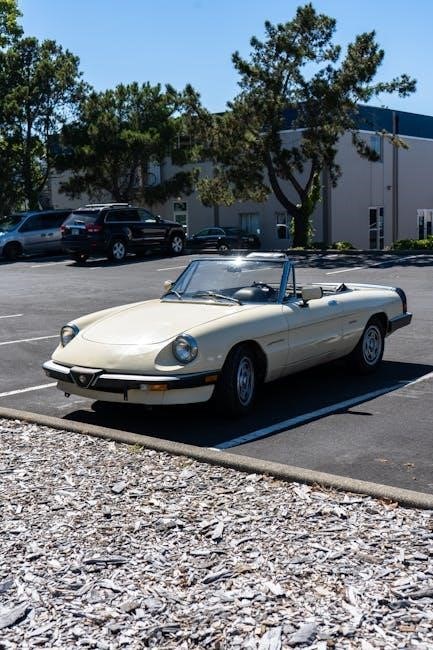
The Role of Owner Manuals in Car Maintenance
Classic car owner manuals are essential guides for maintenance, providing detailed information on caring for your vehicle. They cover routine checks, part replacements, and diagnostic processes, ensuring proper upkeep and performance. By following the manual, owners can maintain their car’s condition, preventing potential issues. These manuals are invaluable for both novice and experienced owners, offering clear, practical advice and detailed instructions tailored to their specific vehicle.
3.1 Scheduled Maintenance Recommendations
Classic car owner manuals provide detailed scheduled maintenance recommendations, outlining timelines for essential services like oil changes, tire rotations, and fluid replacements. These schedules are designed to ensure optimal vehicle performance, prevent wear and tear, and address potential issues before they escalate. Recommendations often include specific mileage or time-based intervals for tasks such as spark plug replacement, belt inspections, and brake system checks. By adhering to these guidelines, owners can maintain their classic car’s health, preserve its value, and ensure reliability. Proper maintenance scheduling also helps in identifying parts that may need early replacement, preventing unexpected breakdowns.
3.2 DIY Repair Tips and Tricks
Classic car owner manuals often include DIY repair tips and tricks, empowering owners to handle minor fixes independently. These sections provide step-by-step guidance for common tasks, such as replacing air filters, adjusting brakes, or servicing the cooling system. Manuals may also highlight essential tools needed for DIY repairs and offer advice on troubleshooting simple issues. Many manuals emphasize safety, reminding owners to disconnect batteries or use jack stands. By equipping owners with practical knowledge, these guides foster self-sufficiency and confidence in maintaining their classic vehicles; DIY repairs not only save costs but also deepen the connection between the owner and their car, fostering a sense of accomplishment and pride.
3.3 Understanding Diagnostic Procedures
Classic car owner manuals provide detailed diagnostic procedures to help owners identify and address issues. These sections often include troubleshooting charts, symptom analysis, and step-by-step tests for various systems. Manuals may explain how to use basic tools like multimeters or compression gauges to diagnose problems. While modern cars rely on advanced diagnostic tools, older vehicles often require more hands-on, methodical approaches. By following these procedures, owners can pinpoint faults more efficiently, saving time and money. The manuals also emphasize the importance of systematic diagnosis to avoid unnecessary repairs. This guidance empowers owners to resolve issues confidently, ensuring their classic cars run smoothly and reliably.
3.4 Importance of Adhering to Manual Guidelines
Adhering to the guidelines in classic car owner manuals is crucial for maintaining vehicle health and longevity. These manuals provide specific instructions tailored to the car’s make and model, ensuring proper maintenance and repair practices. Deviating from recommended procedures can lead to premature wear, costly repairs, or even safety hazards. Following the manual’s advice helps preserve the car’s authenticity and value, especially for collectors. Additionally, adhering to guidelines ensures compliance with safety standards, reducing the risk of accidents. By sticking to the manual, owners can enjoy a smoother driving experience and protect their investment in these timeless vehicles.
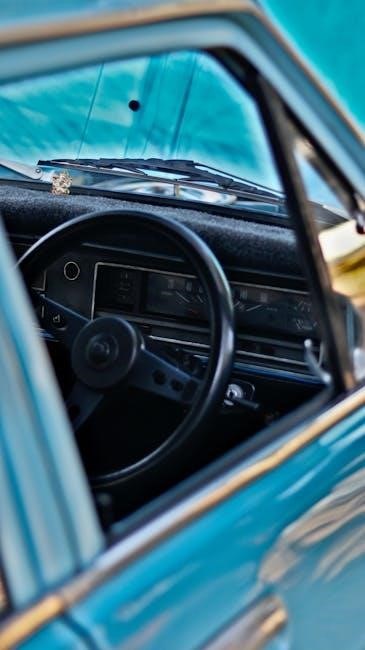
Where to Find Classic Car Owner Manuals
Classic car owner manuals can be found through online marketplaces, specialty automotive stores, vintage car clubs, and sometimes directly from manufacturers or dealerships.
4.1 Online Resources and Websites
Online resources are a convenient way to locate classic car owner manuals. Websites like ManualsLib, Autozone, and eBay often have extensive collections of vintage and classic car manuals available for download or purchase. Additionally, specialized forums and communities dedicated to classic cars frequently share or sell rare manuals; Some manufacturers also provide digital versions of their classic manuals on their official websites. These online platforms offer a wide range of options, making it easier for enthusiasts to find the specific manual they need. Many sites cater to classic car enthusiasts, ensuring accessibility and convenience.
4.2 Dealerships and Manufacturer Support
Dealerships and manufacturer support are reliable sources for classic car owner manuals. Many automotive manufacturers maintain archives of vintage manuals, which can be accessed through their official websites or by contacting customer support. Some dealerships specialize in classic cars and may offer reproductions or original manuals for specific models. Additionally, certain manufacturers have heritage programs that provide access to historical documents, including owner manuals. While these resources are valuable, availability may vary depending on the rarity and age of the vehicle. Reaching out directly to manufacturers or authorized dealers is often the best way to obtain authentic manuals for classic cars.
4.3 Classic Car Communities and Forums
Classic car communities and forums are excellent resources for finding owner manuals. These platforms connect enthusiasts who often share rare or hard-to-find documents. Many forums have dedicated sections for resource sharing, where members can upload or request manuals. Additionally, community members may offer scanned copies or provide guidance on locating specific manuals. These collaborative spaces foster knowledge exchange and support among classic car enthusiasts. By engaging with these communities, owners can gain access to valuable information and resources that might not be available elsewhere. This collective effort ensures the preservation of classic car knowledge for future generations.
4.4 Auctions and Specialty Stores
Auctions and specialty stores are valuable sources for classic car owner manuals. Many rare and vintage manuals surface at classic car auctions, where enthusiasts and collectors actively bid on them. Specialty stores that cater to classic car enthusiasts often carry a selection of manuals, either in original form or as high-quality reproductions. These stores may also offer scanning services or digital versions for convenience. Additionally, some retailers specialize in automotive literature, making them a go-to destination for hard-to-find manuals. For collectors and restorers, these resources are invaluable, providing the detailed information needed to maintain and preserve classic vehicles authentically.
The Structure of a Classic Car Owner Manual
A classic car owner manual typically includes an introduction, vehicle overview, maintenance schedules, troubleshooting guide, and glossary. It is organized logically for easy reference.
5.1 Table of Contents and Index
The table of contents and index are essential components of a classic car owner manual, providing quick access to specific information. The table of contents outlines the manual’s structure, listing sections like introduction, maintenance, and troubleshooting. The index, typically alphabetized, allows users to locate terms or topics rapidly. Together, these features ensure that owners can efficiently navigate the manual, saving time when searching for guidance on particular aspects of their vehicle. These organizational tools are designed to enhance usability, making the manual a practical resource for both experienced enthusiasts and new classic car owners.
5.2 Detailed Illustrations and Diagrams
Detailed illustrations and diagrams are crucial elements in classic car owner manuals, providing visual guidance for maintenance, repairs, and operation. These visuals often include exploded views of engine components, wiring diagrams, and step-by-step instructions for complex procedures. High-quality images and clear labels help owners identify parts and understand their functions. Diagrams also highlight safety features and critical systems, ensuring that users can perform tasks accurately. By combining text with visuals, manuals become more accessible, especially for those with limited mechanical experience. These illustrations are often reproduced from original manufacturer materials, preserving authenticity and clarity for classic car enthusiasts.
5.3 Safety Precautions and Warnings
Safety precautions and warnings are vital sections in classic car owner manuals, ensuring owners and mechanics operate and maintain vehicles safely. These sections outline essential guidelines to prevent injuries and property damage. Common warnings include the use of proper protective gear, such as gloves and goggles, and caution against working on live electrical systems or hot engines. Classic cars may have unique hazards, like outdated braking systems or flammable materials. Failure to follow these precautions can lead to serious injury or further vehicle damage. Adhering to these guidelines is crucial for safe maintenance and operation, preserving both the car and the owner’s well-being.
5.4 Glossary of Technical Terms
A glossary of technical terms in classic car owner manuals serves as a valuable resource for understanding complex vocabulary. It defines key phrases like “carburetor,” “differential,” and “camshaft,” ensuring clarity for both novice and experienced owners. This section is crucial for deciphering instructions and troubleshooting effectively. By providing clear definitions, it empowers owners to tackle repairs and maintenance with confidence. The glossary bridges the gap between technical jargon and practical application, making the manual accessible to all users. It is an indispensable tool for anyone working on or restoring a classic vehicle, ensuring proper understanding and safe execution of maintenance tasks.
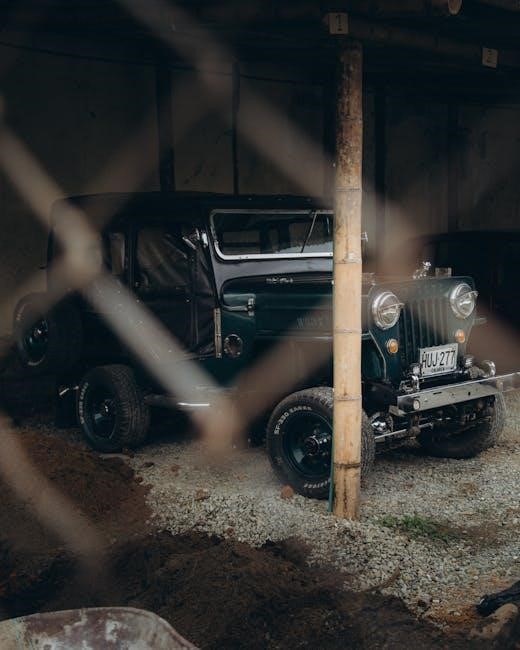
Legal and Safety Considerations
Classic car manuals include legal disclaimers, safety guidelines, and regulatory compliance information to protect owners and manufacturers from liability. Adhering to these ensures safe vehicle operation. They also outline warranty terms and limitations, providing clarity on coverage and exclusions. Safety instructions are emphasized to prevent accidents and injuries, while compliance with local laws ensures legal vehicle usage. These sections are critical for responsible ownership and legal protection, making them essential for all classic car enthusiasts to review and follow meticulously. Proper adherence helps maintain safety and avoids potential legal issues, safeguarding both the owner and others on the road.
6.1 Warranty Information and Disclaimers
Classic car owner manuals typically include detailed warranty information, outlining what is covered and for how long. This section specifies the terms under which repairs or replacements are provided, often limited to the original purchaser. Disclaimers are also included to protect manufacturers from liability beyond the stated warranty. These disclaimers clarify that the manual is for informational purposes only and does not extend the warranty; They may also exclude coverage for modifications or misuse. Understanding these sections is crucial for owners to know their rights and limitations. Always refer to the manual for specific details, as warranty terms vary by manufacturer and vehicle age.
6.2 Safety Guidelines for Vehicle Operation
Classic car owner manuals provide essential safety guidelines to ensure safe vehicle operation. These guidelines often include warnings about proper seatbelt use, even in older models that may not have modern restraint systems. Instructions emphasize the importance of maintaining a safe driving posture and adjusting mirrors for optimal visibility. Additionally, manuals may advise on proper braking techniques and the importance of regular inspections for worn-out parts. They also caution against overloaded vehicles, as this can compromise handling and braking performance. Owners are urged to avoid operating the vehicle under conditions that could endanger themselves or others, such as extreme weather or mechanical failure.
6.3 Compliance with Local Laws and Regulations
Classic car owner manuals often highlight the importance of complying with local laws and regulations. These guidelines ensure that vehicles meet legal standards for roadworthiness, emissions, and safety. Manuals may outline requirements for registration, insurance, and periodic inspections. They also address regulations regarding emissions testing, particularly for older vehicles, which may need to meet modern environmental standards. Additionally, manuals often reference seatbelt laws and other safety regulations, even if the classic car was manufactured before such laws were enacted. Owners are encouraged to familiarize themselves with local ordinances to avoid legal issues and ensure their vehicle remains compliant for safe operation.
6.4 Importance of Following Safety Instructions
Following safety instructions in classic car owner manuals is crucial for ensuring the well-being of both the driver and passengers. These guidelines are designed to prevent accidents and mechanical failures, often highlighting specific risks associated with older vehicles. Ignoring safety advice can lead to dangerous situations, such as improper handling of braking systems or electrical components. Adhering to these instructions helps maintain the vehicle’s reliability and longevity. Manuals often emphasize proper use of safety features, even if they differ from modern standards. By adhering to these precautions, owners can minimize risks and enjoy a safer driving experience while preserving their classic car’s condition and performance.
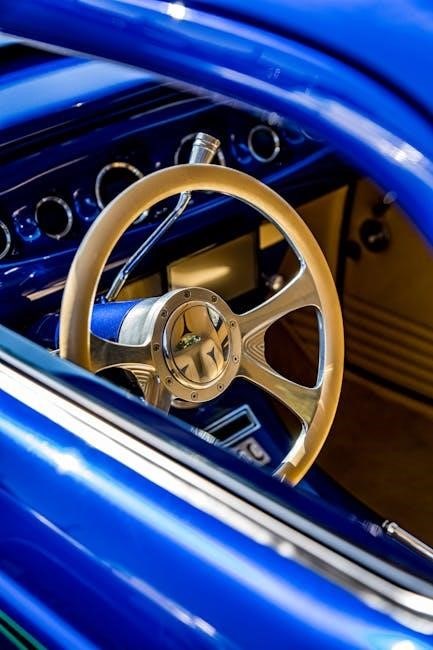
The Impact of Technology on Classic Car Manuals
Technology has transformed classic car manuals, offering digital versions, mobile apps, and interactive guides. These tools enhance accessibility, provide real-time updates, and support modern maintenance needs effectively.
7.1 Digital Versions of Owner Manuals
Digital versions of classic car owner manuals have become increasingly popular, offering unparalleled convenience and accessibility. These electronic documents can be easily downloaded or accessed online, eliminating the need for physical storage. They often feature searchable text, zoomable illustrations, and hyperlinked sections for quick navigation. Digital manuals are particularly useful for owners who prefer modern technology or need immediate access to information. Many enthusiasts appreciate the ability to carry multiple manuals on a single device, such as a smartphone or tablet. Additionally, digital versions are often updated with new information, ensuring owners have the most accurate and relevant guidance for maintaining their classic vehicles.
7.2 Mobile Apps for Classic Car Owners
Mobile apps designed for classic car owners have revolutionized the way enthusiasts maintain and enjoy their vehicles. These apps often include digital versions of owner manuals, allowing easy access to essential information on the go. Some apps feature diagnostic tools to help identify issues, while others offer maintenance tracking to keep your classic car in top condition. Many apps provide a community forum for sharing tips and advice, catering specifically to vintage models with tailored resources. With features like parts databases and repair guides, these apps are invaluable for restoration projects. Enhanced with regular updates and user feedback, they offer a dynamic support system, making it easier to care for and appreciate classic cars in the modern age, ensuring they remain in peak condition for years to come.
7.3 Integration of Modern Diagnostic Tools
The integration of modern diagnostic tools into classic car owner manuals has enhanced the ability to identify and address issues efficiently. Tools like OBD-II scanners and Bluetooth adapters enable owners to connect their classic cars to modern diagnostic systems. These tools provide real-time data on engine performance, allowing for precise troubleshooting; Many apps and software programs now support vintage vehicles, offering compatibility with older systems. This fusion of old and new technology helps maintain the authenticity of classic cars while leveraging contemporary advancements. By integrating these tools, owners can diagnose problems faster and ensure their vehicles run smoothly, blending tradition with innovation for optimal performance and longevity.
7.4 The Future of Owner Manuals in the Digital Age
The future of classic car owner manuals is poised to embrace advanced digital innovations, enhancing user experience through interactive and personalized features. Augmented reality (AR) will enable 3D, real-time repair instructions, while artificial intelligence (AI) will tailor content to individual vehicle data. Cloud-based platforms will ensure instantaneous updates and accessibility across devices. These manuals will also incorporate video tutorials and virtual assistance, guiding users through complex procedures effortlessly. Enhanced accessibility and interactivity will empower owners to manage their vehicles more effectively, ensuring that classic cars continue to be cherished and well-maintained in the digital age.
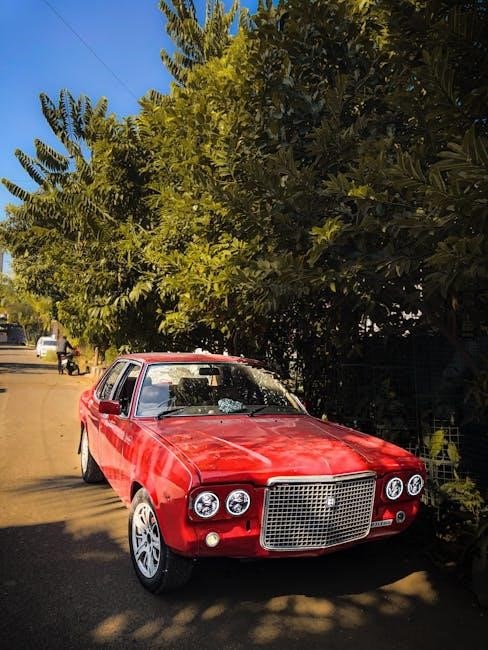
Collecting and Preserving Classic Car Manuals
Collecting and preserving classic car manuals is a valuable endeavor, as they serve as historical artifacts and vital resources for restoring and maintaining vintage vehicles effectively.
8.1 The Hobby of Collecting Owner Manuals
Collecting classic car owner manuals has become a popular hobby among automotive enthusiasts. These manuals offer a glimpse into the history of vehicles, providing detailed insights into their design, functionality, and evolution. Many collectors appreciate the nostalgic value, as these documents often feature vintage artwork and advertisements. For some, the hunt for rare or hard-to-find manuals is as rewarding as owning the cars themselves. Additionally, these manuals serve as valuable resources for restoration projects, making them highly sought after by classic car enthusiasts and historians alike. The hobby not only preserves automotive heritage but also fosters a sense of community among collectors.
8.2 Tips for Storing and Preserving Manuals
Proper storage and preservation of classic car owner manuals are essential to maintain their condition and longevity. Use acid-free materials, such as archival-quality folders or boxes, to prevent degradation. Store manuals in a cool, dry place away from direct sunlight and moisture. Consider using page protectors to shield individual pages from dust and wear. For especially valuable manuals, professional binding restoration can extend their lifespan. Digitizing manuals is another modern approach, allowing for easy access while preserving the original. Organize your collection systematically to prevent loss or damage. Regularly inspect manuals for signs of deterioration and address issues promptly to ensure they remain intact for future generations.
8.3 Restoring Damaged or Worn-Out Manuals
Restoring damaged or worn-out classic car owner manuals requires careful attention to detail to preserve their historical value. Start by gently cleaning pages with a soft-bristled brush or a lint-free cloth to remove dirt and dust. For torn pages, use acid-free tape or archival-grade adhesives to repair them without causing further damage. If the cover is damaged, consider rebind-ing it using high-quality, period-appropriate materials. For severe damage, consult a professional conservator who specializes in paper restoration. Digitizing the manual can also serve as a backup, ensuring the information is preserved even if the physical copy deteriorates further. Restoration not only saves the manual but also maintains its historical significance for future enthusiasts.
8.4 The Value of Rare and Vintage Manuals
Rare and vintage classic car owner manuals hold significant value for collectors and enthusiasts. These manuals often become highly sought-after collectibles, especially for iconic or limited-production vehicles. Their historical significance and rarity can drive up demand, making them valuable additions to car collections. Many vintage manuals feature original illustrations and detailed information that modern versions lack, adding to their appeal. Collectors may seek out first editions or manuals in pristine condition, as these can appreciate in value over time. For restoration projects, rare manuals provide irreplaceable insights, making them both culturally and monetarily valuable. Proper storage and care are essential to preserving their worth.
Classic car owner manuals are invaluable resources for maintenance, restoration, and historical preservation, offering practical guidance and insights into iconic vehicles, making them essential for enthusiasts and collectors alike.
9.1 Summary of Key Points
Classic car owner manuals are essential for understanding vehicle maintenance, repair, and operation, providing detailed guidance for enthusiasts. They offer historical insights, technical specifications, and practical advice, making them invaluable for preserving classic cars. Manuals include troubleshooting tips, DIY repair guidance, and safety precautions, ensuring owners can maintain their vehicles effectively. Their structured format, with illustrations and glossaries, enhances usability. Whether sourced from online archives, dealerships, or collector communities, these manuals are indispensable for both novice and experienced collectors. By adhering to their guidelines, owners can ensure the longevity and authenticity of their classic vehicles, making manuals a cornerstone of classic car ownership and preservation efforts.
9.2 Final Thoughts on the Importance of Owner Manuals
Classic car owner manuals are indispensable resources for enthusiasts, serving as lifelines for maintenance, repair, and historical preservation. They provide unparalleled insights into the specifics of each vehicle, ensuring authenticity and longevity. Beyond practicality, these manuals hold sentimental value, connecting owners to their cars’ heritage. Their detailed guidance empowers owners to tackle challenges confidently, fostering a deeper bond with their classic vehicles. As both functional tools and cherished keepsakes, owner manuals remain irreplaceable companions for anyone passionate about classic cars, offering timeless wisdom and inspiration for generations of automotive enthusiasts.
9.3 Encouragement to Use and Preserve Manuals
Classic car owner manuals are invaluable treasures that deserve careful use and preservation. By consulting these guides, owners ensure their vehicles receive proper care, maintaining their condition and performance. DIY enthusiasts will find satisfaction in following detailed instructions, while collectors will appreciate the historical significance of these documents. Preserving manuals for future generations is a noble endeavor, as they serve as windows into automotive history. Whether for practical use or sentimental value, these manuals are worth cherishing. Embrace the wisdom they offer and share their importance with fellow enthusiasts to keep the legacy of classic cars alive.
